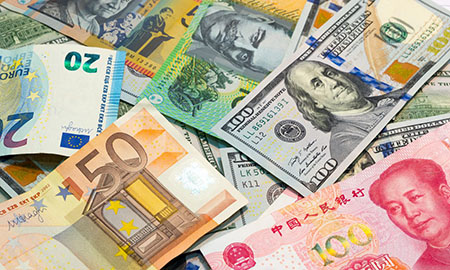Special to WorldTribune.com
The global economy is hardly out of the woods yet. The resurgent Corona virus pandemic, coupled with labor shortages and an inflationary surge not seen in a generation, have served as an undertow to wider and sustainable economic growth.
“The world is now two years into the COVID-19 pandemic, and the end is nowhere in sight. The human, economic and social toll of the pandemic has been devastating,” warns UN Secretary General Antonio Guterres.
The UN’s annual World Economic Economic Situation and Prospects 2022 advises, “Global economic recovery hinges on a delicate balance amid new waves of COVID-19 infections, persistent labour market challenges, lingering supply-chain constraints and rising inflationary pressures.”
 The report highlights, “After a global contraction of 3.4 percent in 2020 and following an expansion of 5.5 percent in 2021, the highest rate of growth in more than four decades, the world economy is projected to grow by 4 percent in 2022 and 3.5 percent in 2023.”
The report highlights, “After a global contraction of 3.4 percent in 2020 and following an expansion of 5.5 percent in 2021, the highest rate of growth in more than four decades, the world economy is projected to grow by 4 percent in 2022 and 3.5 percent in 2023.”
After the near predictable bounce-back after the economic lockdowns and chaos of 2020, the “growth momentum slowed considerably by the end of 2021 including in big economies like China, the European Union and the United States of America, as the effects of fiscal and monetary stimuli dissipated and major supply-chain disruptions emerged.”
“In the United States, robust growth in 2021, estimated at 5.5 percent, is forecast to decelerate to 3.5 percent in 2022,” the Report cautions and forecasts, “Recovery has largely depended on domestic demand; external demand has been weak.” Moreover, inflationary pressures, the largest in over forty years, are expected to persist well into 2022.
Concerning China the Report underscores, “China’s economy expanded an estimated 7.8 percent in 2021, with growth projected to moderate to 5.2 percent in 2022. Rapid recovery in the first half of 2021, driven by strong exports due to the reopening of developed countries and robust investment, has lost momentum.”
Elsewhere in East Asia the robust regional growth of 6.7 percent in 2021 rebounded after only 1 percent growth in 2020; expansion is forecast to moderate to 4.9 percent in 2022.
Japan for example saw a negative growth rate of 4.6 percent in 2020, a tepid rebound of 2.2 percent in 2021, but is expected to grow 3.3 percent this year. South Korea’s growth after falling one percent in 2020, grew 4.3 in 2021 and may reach 3 percent this year.
India appears to stand alone with economic recovery amid a terrible Covid wave. The Report cites, “India’s economic recovery is on a solid path, amid rapid vaccination progress, less stringent social restrictions… after falling 10.6 percent in 2020, GDP is projected to expand by 6.7 percent in 2022 after a 9 percent expansion in 2021… Robust export growth and public investments underpin economic activity.”
Throughout the European Union conditions are still facing headwinds. The Report states, “The aggregate GDP of the EU-27, after shrinking by 6 percent in 2020, bounced back by an expected 4.7 percent in 2021. It may be followed by a further 3.9 percent expansion in 2022.”
Latin America equally faces complex economic conditions. “Real GDP expanded by an estimated 6.5 percent in 2021 following the 7.4 percent contraction in 2020, the region’s deepest pull back in 120 years. Growth is projected to average only 2.2 percent in 2022,” the Report cautions.
For example, Argentina endured a 9.9 percent fall in 2020, followed by 9.8 percent growth last year but is only expected to reach 2.2 percent this year. Venezuela witnessed a minus 30 percent in 2020, and minus 3 percent last year only to hopefully reach 3 percent in 2022.
Dr. Hamid Rashid, Chief of the UN’s Economic Monitoring Branch in the Department of Economic and Social Affairs, warned correspondents, “The road ahead is bumpy, if not perilous.” He added that while the past year saw some rebounds globally, there has been a steep increase in overall poverty with 64 million more people in poverty in 2022 than in 2019.
Dr. Rashid stresses that there is “uneven recovery because of an uneven access to vaccines.”
Even before the pandemic in 2020, there was a massive rise in debt across the world. Those effects are now manifesting themselves in wider global inflation. Inflation, now at a stunning 7 percent in the U.S., serves as an across- the-board tax on the entire society, driving up costs for all and serving as a foreboding undertow to a more robust rebound.
John J. Metzler is a United Nations correspondent covering diplomatic and defense issues. He is the author of Divided Dynamism the Diplomacy of Separated Nations: Germany, Korea, China (2014). [See pre-2011 Archives]

 By
By